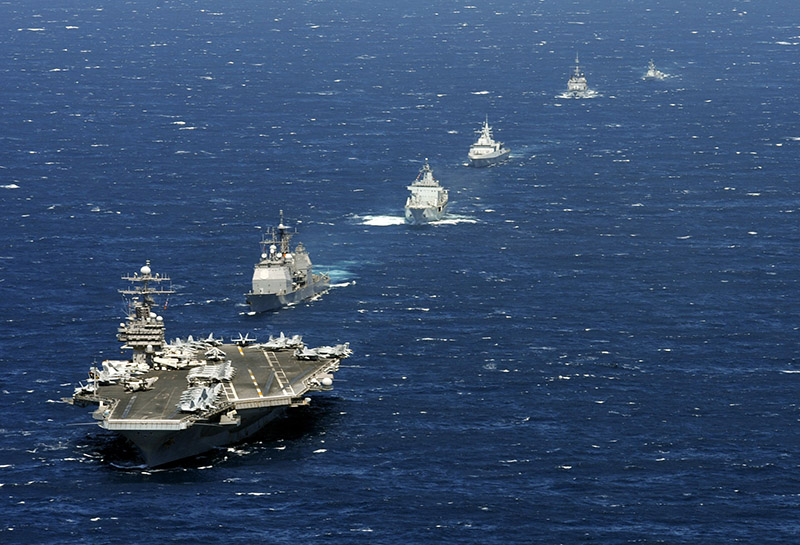If you thought aircraft carriers were invincible you were wrong.
On Mar. 4, the French Ministry of Defense released some interesting details, about the activity conducted by one of its nuclear-powered attack submarine (SNA) in the waters of the North Atlantic Ocean.
According to French MoD website (that is no longer online, even if you can still find a cached version of the article titled “Le SNA Saphir en entraînement avec l’US Navy au large de la Floride”), the Saphir submarine has recently taken part in a major exercise with the U.S. Navy off Florida.
The aim of the exercise was joint training with U.S. Carrier Strike Group 12 made by the aircraft carrier Theodore Roosevelt, several Ticonderoga cruisers or Arleigh Burke-class destroyers and a Los Angeles-class submarine, ahead of their operational deployment.
The scenario of the drills saw some imaginary states assaulting American economic and territorial interests; threats faced by a naval force led by USS Theodore Roosevelt.
During the first phase of the exercise, the Saphir was integrated into the friendly force to support anti-submarine warfare (ASW) by cooperating with U.S. P-3C Orion P-8A Poseidon MPA (Maritime Patrol Aircraft): its role was to share all the underwater contacts with the other ASW assets.
In the second phase of the exercise, the Saphir was integrated with the enemy forces and its mission was to locate the aircraft carrier Theodore Roosevelt and its accompanying warships and prepare to attack the strike group.
While the fictious political situation deteriorated, the Saphir quietly slipped in the heart of the multi-billion-dollar aircraft carrier’s defensive screen, while avoiding detection by ASW assets.
On the morning of the last day, the order to attack was finally given, allowing the Saphir to pretend-sinking the USS Theodore Roosevelt and most of its escort.
Although we don’t really know many more details about the attack and its outcome, the scripted exercise its RoE (Rules of Engagement), the simulated sinking of a U.S. supercarrier proves the flattop’s underwater defenses are not impenetrable.
This is the reason why modern subs often train with aircraft carriers: they pose a significant threat to powerful Carrier Strike Groups.
Obviously, this was not the first time a submarine scored a simulated carrier kill with torpedo attacks.
For instance, in 2007 HMCS Corner Brook, a Canadian diesel-electric submarine “sunk” UK’s Illustrious during an exercise in the Atlantic.
Image credit: U.S. Navy
















